
In addition to product lines manufactured for intensely dry skin, there are three basic lotions manufactured by Lubriderm for daily use by people of all skin types, from normal to dry. These products, sold under the “Daily Moisture” label, come in the basic formula, a fragrance-free and sensitive skin lotion formulation, as well as lotions with sunscreen, shea and cocoa butter. The basic formula, fragrance-free and sensitive skin lotion ingredients are similar, according to the product listings provided by the manufacturer's website.
Moisturizers
Water is listed as an ingredient in Lubriderm's Daily Moisture, Daily Moisture Fragrance-Free and Daily Moisture Sensitive Skin formulas. Water adds moisture to skin instantly and lends texture to the lotion. Mineral oil, a byproduct of petroleum manufacturing processes, and glycerin, a hygroscopic moisturizer, are also included in all three Daily Moisture lotion products. Dimethicone, a silicone-based moisturizer, is also common across all three products. Caprylic/capric triglyceride is listed in Lubriderm's basic and fragrance-free formulas. The sensitive skin Lubriderm lotion has four ingredients not found in the other two lotions: petrolatum, a petroleum-based product, glyceryl stearate and tri (PPG-3 mistryl ether) citrate. The latter two also function as emulsifiers. Although Lubriderm's website claims the sensitive skin lotion is free of oily products, it contains propylene glycol dicaprylate/dicaprate, an occlusive moisturizer which may lend the product a greasy feeling. Propylene glycol dicaprylate/dicaprate is also a comedone, a product that can cause or worsen acne breakouts, according to “A Consumer's Dictionary of Cosmetic Ingredients.”
Emulsifiers
Emulsifiers keep the oil and water-based ingredients in Lubriderm lotions from separating over time. The only two emulsifiers common to all three lotions are carbomer and cetyl alcohol. The related cetearyl alcohol is included in the basic Daily Moisture lotion and the fragrance-free version. Stearic acid, which also functions to change how water interacts with the product, is found in all but the sensitive skin Lubriderm Daily Moisture lotion. PEG-40 Stearate and xanthan gum are emulsifiers included in Lubriderm's sensitive skin lotion. The product also contains an ingredient listed simply as emulsifying wax, the components of which may vary, according to “Milady's Skin Care and Cosmetic Ingredients Dictionary.”
Preservatives
Lubriderm lotion contains four preservatives common to all three lotions in their basic line. Methylparaben, propylparaben and ethylparaben have anti-bacterial, anti-fungal and antimicrobial properties that keep potentially harmful microorganisms from forming in Lubriderm lotions over time. Phenoxyethanol is an antimicrobial ingredient found in the basic and fragrance-free Daily Moisture lotions. Citric acid, a preservative and natural fragrance, is also found in the basic and fragrance-free Lubriderm lotions. Sodium citrate, a citric acid derivative and chelating agent, is found in all but the sensitive skin formula. Lubriderm's sensitive skin Daily Moisture lotion contains three preservatives not found in the other lotions: DMDM hydantoin, disodium EDTA and butylparaben.
Other Ingredients
True to Lubriderm's claims, the Daily Moisture and Daily Moisture fragrance-free formulas contain vitamin B5, listed in the ingredients as panthenol. These two lotions also contain ceteareth-20, a solvent. All three lotions contain sodium hydroxide, or lye, used to control the pH level of the lotions. The sensitive skin and fragrance-free formulas do not include a listing for fragrance, though the basic Daily Moisture lotion does. Lubriderm's sensitive skin formula contains three ingredients not found in the other two lotions: butylene glycol, C11-13 isoparaffin and titanium dioxide. Butylene glycol is a solvent and opacifier. C11-13 isoparaffin is a solvent and titanium dioxide is an opacifier, sunscreen and pigment, as noted in “A Consumer's Dictionary of Cosmetic Ingredients.”
Related Articles

The Ingredients in Jergens Naturals
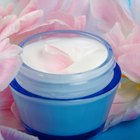
Ingredients in Oil of Olay Moisturizer
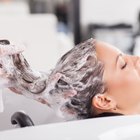
Joico K-Pak Shampoo Ingredients

What Are the Ingredients in Elizabeth ...

The Ingredients of Neutrogena Sensitive ...

Ingredients in Curel Lotion

Cetaphil Antibacterial Cleansing Bar ...

Infusium 23 Leave in Treatment ...

Aveda Shampure Ingredients

Ingredients in Dial Liquid Soap

Phisoderm Ingredients

Banana Boat Lotion Ingredients

Keratin Complex by Coppola Ingredients

The Ingredients in Triple Paste Diaper ...
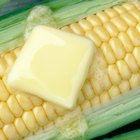
Common Food Emulsifiers
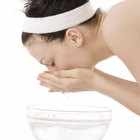
Cetaphil Gentle Skin Cleanser ...
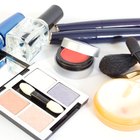
The Manufacturing Process of Cosmetics

Gold Bond Lotion Ingredients

What Ingredients Are in Oil of Olay ...
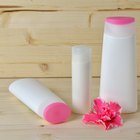
Lancome Skin Care Ingredients
References
- "Milady's Skin Care and Cosmetic Ingredients Dictionary"; Natalia Michalun; 2009
- "A Consumer's Dictionary of Cosmetic Ingredients, 7th Edition"; Ruth Winter; 2009
- "Cosmetics Unmasked: Your Family Guide to Safe Cosmetics and Allergy-Free Toiletries"; Stephen Antczak, Gina Antczak; 2001
Writer Bio
Elizabeth Tumbarello has been writing since 2006, with her work appearing on various websites. She is an animal lover who volunteers with her local Humane Society. Tumbarello attended Hocking College and is pursuing her Associate of Applied Science in veterinary technology from San Juan College.
Photo Credits
hand image by Stephanie Bandmann from Fotolia.com